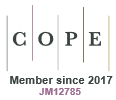Value: in the eyes of the beholden
Daniel O’Halloran A *A
Abstract
A reflection of the effectiveness of national health funding reforms to improve system efficiency and improve patient outcomes. Despite the complexities, policy levers exist that can promote value. However, a pressing question remains will those levers be used when activity is required to balance the budgets of our economies’ largest employers.
Keywords: cost of care, efficiency, health funding, health reform, health services, patient centred care, provider centred care, value-based healthcare.
Depending on where you sit in society, and indeed the health system, one’s perspective of value might be skewed by the lens you have or the one you choose to use. I first appreciated this when we delivered Australia’s first public reports (https://www.aihw.gov.au/reports/hospitals/hospital-performance-costs-acute-patients-2011-12/contents/summary/key; https://www.aihw.gov.au/getmedia/6b74a11f-ae1d-4346-a6a1-a2a569d294a6/hpf_54_2011-12_2011-12_rpt.pdf?v=20230605173955&inline=true) on the technical efficiency of public hospitals a decade ago. These were contentious and focused on the cost of care – they bore no relationship to outcomes or insight on the value of the care.
I later learnt about the healthcare triangle,1 which highlights the relationship between patient, provider, and funder perspectives. A patient is seeking an outcome; a provider provides the care in which they are trained; and funders within a universal healthcare system are responsible for promoting value from the investments they make with taxpayer funds when advancing a sustainable and an equitable system for society. When a patient has waited months to access a provider, in the hope and expectation of a desired outcome, the provider can be pressured to provide care – even if there is a limited chance of the patient’s desired outcome(s). Equally, there can be strong perverse incentives as funders pay for activity, not outcomes.
So, who is best placed to drive a value agenda? Patients, providers, and funders are influenced by the lens they have, which might skew their perspective because of the asymmetry in information. Thus, while primary care providers and insurers have an influential role, they typically have inadequate information to proactively engage with patients regarding the risks and outcomes of specialist interventions before making a referral or paying for care. Thankfully, we do have the capacity to do something about this.
Today, we have fewer workers for every person older than 65 years of age. We have record employment in the sector, and the workforce delivers more occasions of service. Yet we are not achieving the outcomes we seek. We have a system and workforce at breaking point.
Our health system is costing us more, we are doing more, and we employ more people. This negatively affects national productivity due to the opportunity costs on our labour market. Despite our investment, we are no healthier. Simply employing more or throwing more money at this situation has not resolved the underlying issues. If we fail to derive value from our investment in the health system, our children will be the ones to suffer, as will our prosperity, if it is not already suffering. Episodes of care are too simplistic. A diagnosis is not an outcome.
Funding reformed in Australia has not supported an outcomes or value focused agenda. There has been far too much focus on cost and activity. Why? Because we had an expenditure issue with concerns over productivity, so it made sense to focus on costs and activity, at a superficial level. Yet it is more complex than that and we now observe significant perverse incentives from how funding is allocated. This is especially evident in regional Australia, preventive health, as well as in child, maternal, and family health services.
So, who should determine value? Clinicians who do not benefit from the episode of care, directly or indirectly, are best placed to determine value. These clinicians can appreciate that there is never a ‘no risk’ option and there are always trade-offs and counterfactuals. Yet the lens must focus on the journey of care and the outcomes of the journey. Primary care and private insurers have a role.
System managers have the data they require to add considerable value to the value agenda. It is not about more data; it is how data are used and with whom it is shared. While state-operated providers are the largest employers in our economy, it is difficult to fathom how and when system managers will reform funding for outcomes when revenues are generated from activity and not value from the Commonwealth.


